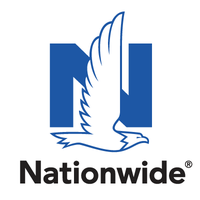Pay-Per-Mile Car Insurance
Pay-by-the-mile car insurance offers flexibility and savings for some drivers. Find out if this option suits your needs.
What is pay-by-the-mile car insurance?
Pay-per-mile car insurance is straightforward: you pay for the mileage you drive.
Insurance companies that offer pay-per-mile policies often claim you can save money by doing so. However, you'll only see these savings if you actually don't drive very often — less than 10,000 miles a year. The average American drives over 14,000 miles per year. In many ways, it's a way for insurance companies to reward low-mileage drivers; the less you're on the road, the less likely you'll be in an accident.
Not all insurance providers offer pay-per-mile plans, but a mix of new startups and established insurance companies are providing this option as an alternative to traditional quote models.
Let’s explore who pay-per-mile car insurance is best for, how it works and the best companies offering it.
Key Takeaways
- Pay-per-mile car insurance allows drivers to pay based on the number of miles they drive, making it ideal for low-mileage drivers.
- Insurers track mileage through wireless car plug-ins, in-car systems, phone applications, and odometer snapshots.
- We consider Nationwide SmartMiles the best option due to availability, discount, safe trip exception and bundling options.
- Pay-per-mile insurance focuses on mileage, while telematics insurance tracks driving behavior.
Who is pay-per-mile insurance best for?
Pay-per-mile insurance is best for people who drive 10,000 miles or less each year — like college students, public transport or walking commuters and remote workers. It may also be a good option for senior drivers looking to save money — on average, drivers over age 65 drive 7,646 miles per year.[1]
However, if you take long-distance trips by car, want more coverage options and perks or are uncomfortable with your driving behavior being tracked, you are likely better off going with a more traditional insurance policy.
| Pay-per-mile insurance may be best for: | Pay-per-mile doesn't work for: |
|---|---|
| College students | Long-distance car commuters |
| Retirees and senior drivers | Those who drive for work |
| Commuters who walk or take public transportation | Those who take long-distance trips by car |
| Remote workers who don't drive often | Those requiring extensive coverage options and endorsements |
| Those cautious of sharing driving data or being monitored by insurers |

"If it works for your driving situation, pay-per-mile can be way cheaper and more fair. However, a potential downside is the extra work of having to keep track of your mileage — some companies may even cancel your policy if you fail to send updated pictures of your odometer."
Cassie Greenwood — Licensed insurance advisor at The Zebra
How does car insurance-by-mileage work?
Most pay-per-mile car insurance policies use an in-car device or phone app to track the number of miles you drive per month to determine your rate.
Your insurer charges a base rate plus a per-mile fee, which is used to calculate your premium. Your base rate consists of standard rating factors such as your driving history, age, gender and vehicle type.
While your annual mileage is a rating factor for determining your rate, it’s not a major contributor to your overall premium (unless you’re in California). Other non-driving factors such as your age and credit score have a bigger impact on your rate than how much time you spend behind the wheel. While these non-driving factors are taken into account when pricing pay-by-the-mile auto insurance, they aren't weighed as heavily.
Zebra Tip: Compare pay-per-mile vs. traditional insurance rates
We recommend that you compare the two costs to figure out how much you might save. You can do this with some quick math:
Monthly base rate + (per-mile rate x approximate # of miles per month) = pay-per-mile insurance monthly premium
Suppose you don't feel like downloading an app or using your odometer. In that case, you can simply input your destination and relevant stops into Google Maps and it will calculate the total distance traveled.
Which auto insurance companies are best for pay-per-mile coverage?
Pay-per-mile auto insurance is growing in popularity, with more major insurers offering by-the-mile rates. While we consider Nationwide MileWise the best pay-per-mile option for most, the best insurer for you will depend upon a variety of factors.
See below how each mileage-based car insurance program works as well as which ones we recommend based on your location, driving profile and priorities. We've also included some companies with similar programs so you can easily compare your options.

- Mileage tracking method: With SmartMiles you have two options: a small plug-in device (compatible with most vehicles produced after 1996) or an in-car system (available in some 2018+ Ford and Lincoln models).
- Availability: All states excluding AK, HI, LA, NC, NY, and OK.
- Coverages offered: All common coverage options.
- Rate: A monthly rate is composed of a base rate and a variable rate (cost per mile), which fluctuates depending on your monthly mileage.
- Features: SmartMiles offers a safe driving discount (up to 10%), road trip exception (only the first 250 miles count on a single day) and a convenient mobile app.
- Mileage tracking method: Metromile uses a "Metromile Pulse" wireless device that plugs into your vehicle's OBD-II port.
- Availability: AZ, CA, IL, NJ, OR, PA, VA, WA
- Coverages offered: All common coverage options.
- Rate: Metromile charges a monthly fee based on your driving profile and then an additional per-mile fee. Metromile advertises monthly fees starting at $29/month and per-mile fees starting at $.06/mile. If your mileage fluctuates month to month, your bill may also.
- Features: Their convenient mobile app offers vehicle locating, street sweeping alerts, a check engine light decoder and a trip tracker that can help track fuel cost and mpg.

- Mileage tracking method: A small device that plugs into your vehicle's OBD-II port.
- Availability: AZ, DE, FL, ID, IL, IN, MD, MA, MN, MO, NJ, OH, OK, OR, PA, SC, TX, VA, WA, WV, and WI.
- Coverages offered: All common coverage options.
- Rate: A daily base rate and a per-mile rate.
- Features: Use their app to track your mileage, review your trips, see your safe driving trends, view vehicle diagnostics, get car maintenance reminders, find a mechanic and access Allstate Car Health.

- Mileage tracking method: More akin to a standard telematics company, Noblr uses your smartphone's accelerometer, gyroscope, GPS and clock to monitor your driving after you download their app.
- Availability: Noblr is available in AZ, CO, LA, MD, NM, OH, PA, TX, and VA.
- Coverages offered: All standard coverage options.
- Rate: A variable rate based on how, where, how much and when you're driving.
- Features: Noblr's app offers real-time driving feedback, a personalized driving score, trip details and statistics, and community and social features in addition to typical insurer app features like policy management.

- Mileage tracking method: You receive a monthly reminder from Mile Auto's MVerity system to snap a photo of your odometer reading, which is automatically transmitted and mileage data is extracted, verified and authenticated without you even having to download an app.
- Availability: AZ, CA, FL, GA, IL, OH, OR, PA, TN, TX, and WI.
- Coverages offered: All standard coverage options.
- Rate: Both your base rate and your per-mile rate are based on standard insurance variables; the company claims to be able to save customers 30-40%.
- Features: Mile markets itself as a champion of customer privacy and is unique in that it doesn't require the use of a car plug-in or phone app to monitor customer driving habits.

- Mileage tracking method: While not technically pay-per-mile, the company is one of the first to claim to be able to sell insurance that you can switch on and off as you need it. You purchase coverage for specific durations (3, 7, 14 or 30 days), paying solely for the period you'll be driving. However, "turning off" insurance can leave you at risk.
- Availability: Availability varies based on plan type; certain plans are not available in some states.
- Coverages offered: Hugo offers three main insurance plans: the "Flex" plan offers liability-only coverage to those who don't drive every day, while its "Unlimited Basic" plan is for those who want liability-only coverage but drive most days. Its "Unlimited Full" plan offers full coverage insurance.
- Rate: Hugo offers a flat daily rate based on the usual factors.
- Features: $0 down payment, flexible micropayments, simple daily rate, free "cancellation," pay-as-you-go, instant proof of insurance and no upfront fees.
How is pay-per-mile car insurance different from telematics?
Pay-per-mile and telematics-driven insurance policies use different metrics to calculate your premium. Pay-per-mile auto insurance does not consider how you drive, while telematics auto insurance measures your driving behavior to set your premium.
A telematics device will track abrupt braking, sharp turns, high speeds and late-night driving to assess how much risk you pose, while pay-per-mile insurance uses your mileage. Both consider your non-driving factors, like age, location and type of car.
Here are some estimated discounts you can expect from telematics:
| Company | Estimated Savings |
|---|---|
| Progressive Snapshot | Average of $130 |
| Allstate Drivewise | Average of 10-25% |
| State Farm Drive Safe & Save | Up to 15% |
| Esurance DriveSense | Varies |
| Nationwide SmartRide | Up to 40% |
| Liberty Mutual RightTrack | Average of 5-30% |
| GEICO DriveEasy | Varies |
Is pay-per-mile car insurance worth it?
Pay-per-mile auto insurance is a solid money-saving option for those who seldom drive or only occasionally, so we don't suggest this type of insurance for all drivers.
If you are simply looking for the best possible rate, shopping around is a good way to assess if pay-per-mile car insurance is worth it. The Zebra allows you to compare insurance products from many top insurance companies, giving you the chance to get multiple insurance quotes to see which plan is best for you. Call us at 1-888-255-4364 and we'll be happy to help you find the right insurance coverage for your needs.
Compare car insurance quotes side-by-side to save.
Frequently asked questions
Federal Highway Administration. Average Annual Miles per Driver by Age Group
Related Content
- Temporary Car Insurance
- Car Insurance for Commuting
- Car Insurance with a Nanny
- Turo Car Insurance
- Car Insurance with Kids
- Car Insurance for Condo Owners
- How Long Can You Stay on Your Parents' Car Insurance Policy?
- Car Insurance for Homeowners
- Car Insurance with Telematics
- Car Insurance for Multiple Vehicles
About The Zebra
The Zebra is not an insurance company. We publish data-backed, expert-reviewed resources to help consumers make more informed insurance decisions.
- The Zebra’s insurance content is written and reviewed for accuracy by licensed insurance agents.
- The Zebra’s insurance editorial content is not subject to review or alteration by insurance companies or partners.
- The Zebra’s editorial team operates independently of the company’s partnerships and commercialization interests, publishing unbiased information for consumer benefit.
- The auto insurance rates published on The Zebra’s pages are based on a comprehensive analysis of car insurance pricing data, evaluating more than 83 million insurance rates from across the United States.


